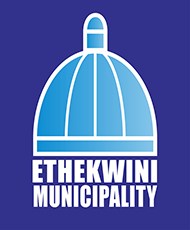
What is embedded generation?
Embedded generation is any generator, such as solar PV, wind, hydro, biomass, co-generation or gas generation, which is connected to the distribution network, either directly, or behind the customer’s meter – in which case it is ‘embedded’ because it is connected to the customer’s wiring which is in turn connected to the distribution network. The parallel connection of any generator to the municipal electrical network, however powered, has numerous implications for the Municipality. It therefore needs to be regulated and managed.
This website serves to:
● Ensure the safety of the municipal staff, the public and the user of the Embedded Generation installation.
● Uphold the power quality of the municipal electricity network
● Clarify metering and billing requirements and options
The eThekwini Municipality does not allow customers to connect any Embedded Generation to the municipal grid without customers following the application process and obtaining written consent from the Municipality. Customer who would like to connect their embedded generation systems to the eThekwini Electricity grid, must complete the online application form and upload all the required supporting documents in order to apply for the connection of their embedded generation to the municipal grid. This applies to residential, commercial, industrial, Independent Power Producers and customers wishing to wheel energy across the eThekwini Municipal network. The purpose of this website is to sets out the requirements and application process of the Municipality in connecting all forms of Embedded Generation to the municipal electricity network. The focus is on Small-Scale Embedded Generation (SSEG), but information is also provided for the connection of larger generators
Why do I have to register my solar system with the municipality?
To ensure compliance with legal and regulatory requirements. All generation systems that are connected and work in parallel with the grid need to be registered to ensure the safety of people, animals and electrical equipment. In addition, only NRS 097-2-1 certified and approved inverters are allowed to be connected to the grid, and the registration process makes it easy for the municipality to verify this. An authorised SSEG minimises the risks associated with injury and loss of life.
What are the benefits of registering your embedded generation system with the eThekwini Municipality?
To ensure compliance with all legal and regulatory requirements. To insure that in the event of a fire, you are covered by your insurance company for replacement. Should your system not be registered, it will be deemed an illegal system which will be liable for a fine and required to be immediately disconnected until it is legally registered with the Municipality. All legally registered customer will be allowed to sell their excess electricity back to the Municipality once they have been fitted with bi-directional meters.
How do I apply for the connection of an embedded generation to the municipal grid?
The Municipality requires that all prospective SSEG/EG customers to complete the online application process and submit the required supporting documents to the Municipality for assessment. The Municipality will evaluate the application according to various guidelines and criteria and inform the applicant of the success or otherwise of the application. Should the application not be successful, the Municipality will advise the applicant regarding necessary measures and costs to enable compliance with the criteria for the SSEG connection. Further information or technical studies such as grid impact studies and network studies may also be requested by the Municipality before a conclusion can be reached. Once the assessment is completed and written approval is provided by the Municipality together with the customer paying the costing on the invoice, the customer can then go ahead and procure and install their SSEG/EG system. Upon completion of construction and commissioning, the customer needs to provide the post commissioning sign off documentation to the Municipality. The Municipality will then set up a site visit to carry on a physical inspection of the system. The customer will also be fitted with a bi-directional meter and moved onto a net-billing tariff which then allows the customer to start selling excess electricity back to the Municipality.